Related Research Articles
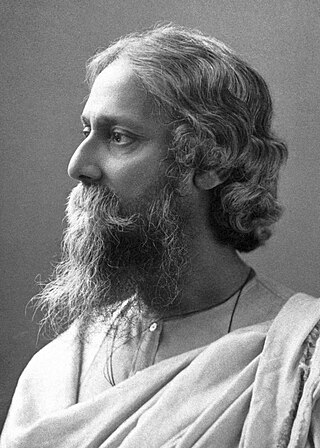
Bengali poetry is a rich tradition of poetry in the Bengali language and has many different forms. Originating in Bengal, the history of Bengali poetry underwent three successive stages of development: poetry of the early age, the Medieval period and the age of modern poetry. All ages have seen different forms of poetry and poetical tradition. It reached the pinnacle during the Bengali Renaissance period although it has a rich tradition and has grown independent of the movement. Major Bengali Poets throughout the ages are Chandidas, Alaol, Ramprasad Sen, Michael Madhusudan Dutt, Nabinchandra Sen, Rabindranath Tagore, Dwijendralal Ray, Satyendranath Dutta, Kazi Nazrul Islam, Jibanananda Das, Jasimuddin, Sukanta Battacharya, Al Mahmud.
The Hungry Generation was a literary movement in the Bengali language launched by what is known today as the Hungryalist quartet, i.e. Shakti Chattopadhyay, Malay Roy Choudhury, Samir Roychoudhury and Debi Roy, during the 1960s in Kolkata, India. Due to their involvement in this avant garde cultural movement, the leaders lost their jobs and were jailed by the incumbent government. They challenged contemporary ideas about literature and contributed significantly to the evolution of the language and idiom used by contemporaneous artists to express their feelings in literature and painting.

Malay Roy Choudhury was an Indian Bengali poet, playwright, short story writer, essayist and novelist who founded the Hungryalist movement in the 1960s.
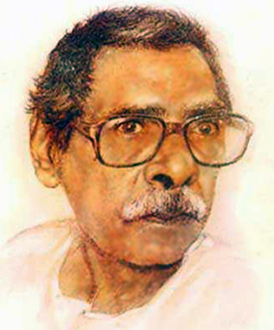
Binoy Majumdar was a Bengali poet who had received the Sahitya Akademi Award in 2005.
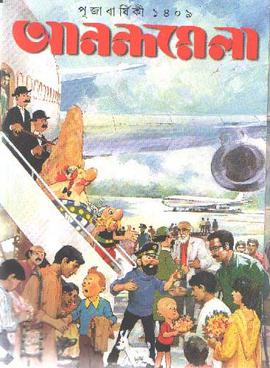
Anandamela, Anondamela, or Anondomela is a children's periodical in the Bengali language published by the ABP Group from Kolkata, India.
Kallol refers to one of the most influential literary movements in Bengali literature, which can be placed approximately between 1923 and 1935. The name Kallol of the Kallol group derives from a magazine of the same name. Kallol was the main mouthpiece for a group of young writers starting their careers around that time including Premendra Mitra, Kazi Nazrul Islam, and Buddhadeb Basu. A number of other magazines that followed Kallol can also be placed as part of the general movement. These include Uttara (1925), Pragati (1926), Kalikolom (1926), and Purbasha (1932).

The Pashchimbanga Bangla Akademi is the official regulatory body of the Bengali language in West Bengal, India. It was founded on 20 May 1986 in Kolkata to act as the official authority of the language and is entrusted with the responsibility of reforming Bengali spelling and grammar, compiling dictionaries, encyclopedias and terminologies and promoting Bengali language and culture in West Bengal. Though the Akademi has no enforcement power over their rules and regulations, they are widely accepted by the Governments of West Bengal and Tripura as well as a considerable number of private publishing houses and institutions such as the Oxford University Press and the Ramakrishna Mission.

Bengali literature denotes the body of writings in the Bengali language and which covers Old Bengali, Middle- Bengali and Modern Bengali with the changes through the passage of time and dynastic patronization or non-patronization. Bengali has developed over the course of roughly 1,300 years. If the emergence of the Bengali literature supposes to date back to roughly 650 AD, the development of Bengali literature claims to be 1600 years old. The earliest extant work in Bengali literature is the Charyapada, a collection of Buddhist mystic songs in Old Bengali dating back to the 10th and 11th centuries. The timeline of Bengali literature is divided into three periods: ancient (650–1200), medieval (1200–1800) and modern. Medieval Bengali literature consists of various poetic genres, including Hindu religious scriptures, Islamic epics, Vaishnava texts, translations of Arabic, Persian and Sanskrit texts, and secular texts by Muslim poets. Novels were introduced in the mid-19th century. Nobel laureate Rabindranath Tagore is the best known figure of Bengali literature to the world. Kazi Nazrul Islam, notable for his activism and anti-British literature, was described as the Rebel Poet and is now recognised as the National poet of Bangladesh.
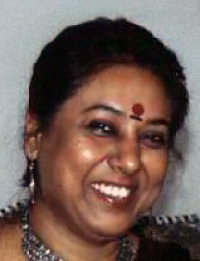
Mallika Sengupta was a Bengali poet, feminist, and reader of Sociology from Kolkata, known for her "unapologetically political poetry".
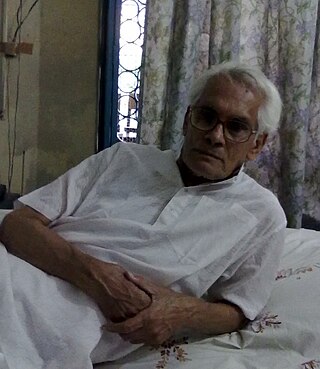
Samir Roychowdhury, one of the founding fathers of the Hungry Generation, was born at Panihati, West Bengal, in a family of artists, sculptors, photographers, and musicians. His grandfather Lakshminarayan, doyen of the Sabarna Roy Choudhury clan of Uttarpara, had learned drawing and bromide-paper photography from John Lockwood Kipling, father of Rudyard Kipling, who was Curator at the Lahore Museum, and thereafter established the first mobile photography-cum-painting company in India in the mid-1880s. The company was later taken over by Samir's father Ranjit (1909–1991). Samir's mother Amita (1916–1982) was from a progressive family of 19th-century Bengal renaissance.
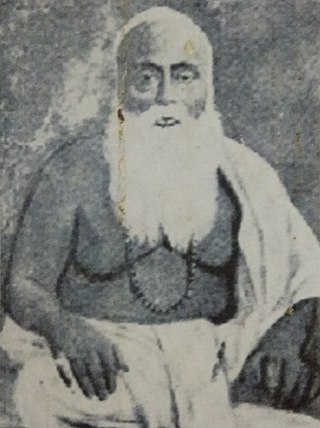
Akshay Chandra Sarkar –was a poet, an editor and a literary critic of Bengali literature.
Kabita Sinha (1931–1999) was a Bengali poet, novelist, feminist and radio director. She is noted for her modernist stance, rejecting the traditional housebound role for Bengali women, a theme echoed later in the work of other poets including Mallika Sengupta and Taslima Nasrin.

Rabindra Guha is a Bengali poet of the Hungry generation movement in literature who subsequently started the Neem Sahitya Andolan with Mrinal Banik and Biman Chattopadhyay from the steel factory city of Durgapur in West Bengal. He has written several collections of poetry, short stories and novels. He is known mainly for the language of the Bengali diaspora which he adopted and developed for his narratives. He lived in Kolkata until the Hungry generation movement died down at the end of the 1960s, and shifted thereafter to Durgapur. At the end of 1970s, he shifted his base to New Delhi where he invented his narrative language of the Bengali diaspora, i.e. of people who live outside West Bengal. Rabindra Guha is a diasporic post-modern writer with a prolific body of work in relation to inner as well as outer diaspora. He has been a creator of language which is a fantastic combination of national and local dialect. His work had been recently accoladed in Jessore University.

The group theatre of Kolkata refers to a tradition in theatres in the Indian city Kolkata, which developed in the 1940s as an alternative to entertainment-oriented theatres. As opposed to commercial theatres, group theatre is "a theatre that is not professional or commercial", characterized by its tendency for experimentation in theme, content and production, and its aim of using the proscenium stage to highlight social messages, rather than having primarily making-money objectives.

Bibhas Roy Chowdhury is a Bengali poet, novelist, and essayist. He is the author of more than twenty books including seven novels and numerous essays in various Bengali literary magazines. He received awards including Bangla Academy Award in 2013, Krittibas Award (1997), Binay Mazumdar Puraskar in 2020 by Paschimbanga Kabita Academy, and Nirmal Acharya Gold Medal for poetry. Some of his poems have been translated into English by Dr. Kiriti Sengupta, a well-known poet and translator, and published by Inner Child Press in association with Hawakal Publishers (Kolkata) as Poem Continuous: Reincarnated Expression (2014). He is also one of the chief advisers of the Bengali literary magazine, Kabita Ashram, and founder member and director of a theatrical troupe named Banga Natya Charcha Kendra. He now works in a publication house, and earns his daily bread by writing and editing.

Netaji is a Bengali biographical soap opera on the life of Netaji Subhash Chandra Bose that premiered on 14 January 2019 and aired on Bengali GEC Zee Bangla. Based majorly on Udyata Kharga Subhash by Achintya Kumar Sengupta and produced by Surinder Films, the series stars Abhishek Bose in the eponymous role, with Basabdatta Chatterjee, marking her comeback on television, Dhruvajyoti Sarkar, Kaushik Chakraborty, Sriparna Roy, Debopriyo Sarkar, Sohan Bandopadhyay, Fahim Mirza appearing in other recurring roles. Due to the COVID-19 pandemic, the shooting of the series was stalled. It was rumoured that along with Karunamoyee Rani Rashmoni, this series will be axed the channel. Putting rest to such rumours, the shooting started from June 11 and new episodes started to air from June 15, 2020.
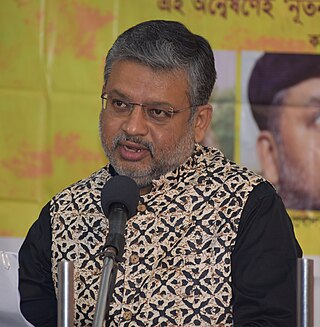
Prabal Kumar Basu is an Indian poet, essayist and editor. He writes in his mother tongue Bengali.

Ek Akasher Niche is a Family Drama Bengali television serial, which aired on Alpha Bangla. It was produced under the banner of Ravi Ojha Productions. The story is about a middle-class family that deals with various challenges and complications on a daily basis and fights all odds to stay united. With over a thousand episodes that aired in early 2000s the serial was a mega-blockbuster hit in Bengal and other Bengali language dominant parts of the world.
References
- ↑ Literary magazine#History of literary magazines
- A critical study of Dalit literature in India Archived 2008-10-31 at the Wayback Machine Dr. Jugal Kishore Mishra.
- The little magazine movement in Marathi; by Dilip Chitre
- http://thecitizen.in/city/literature-visual-arts-and-music/%5B%5D
- http://timesofindia.indiatimes.com/city/madurai/American-College-students-to-launch-Tamil-edition-of-e-zine-from-Shantiniketan/articleshow/31438182.cms - ↑ Chitre, Dilip, ed. An Anthology of Marathi Poetry 1945–65. Mumbai: Nirmala Sadananda Publications, 1967.
- ↑ Ketkar, Sachin, ed. Live Update: an anthology of recent Marathi poetry. Mumbai: Poetrywala Publications, 2004.
- ↑ Archived at Ghostarchive and the Wayback Machine : Subhro Bandopadhyay · Expoesía 2012 · V Feria del Libro de Soria. YouTube .
- ↑ "MONVASHI PATRIKA - Home". www.monvashipatrika.mozello.com. Retrieved 2018-11-03.
- ↑ "Little Magazine Library - Medinipur - Midnapur - Midnapore - East - West - Purba - Paschim".
- ↑ Journals of resurgence [usurped] The Hindu , July 1, 2005.
- ↑ About The Little Magazine
- ↑ Observations on The Little Magazine, Civil Lines and Yatra
- ↑ উর্ণপত্র. "Urnapatra".
- ↑ "Khondakar Ashraf Hossain, UPL Book". University Press Ltd. 2012. Retrieved 2016-12-21.
- "English poeems of Khondakar Ashraf Hossain - Khademul Islam". Writersinkbd. 2008-03-29. Archived from the original on 2013-05-16. Retrieved 2016-12-21. - ↑ পুষ্পকরথ [Pushpakroth]. Porua (in Bengali). Archived from the original on December 29, 2013. Retrieved January 8, 2017.
- ↑ উর্ণপত্র. "Urnapatra".